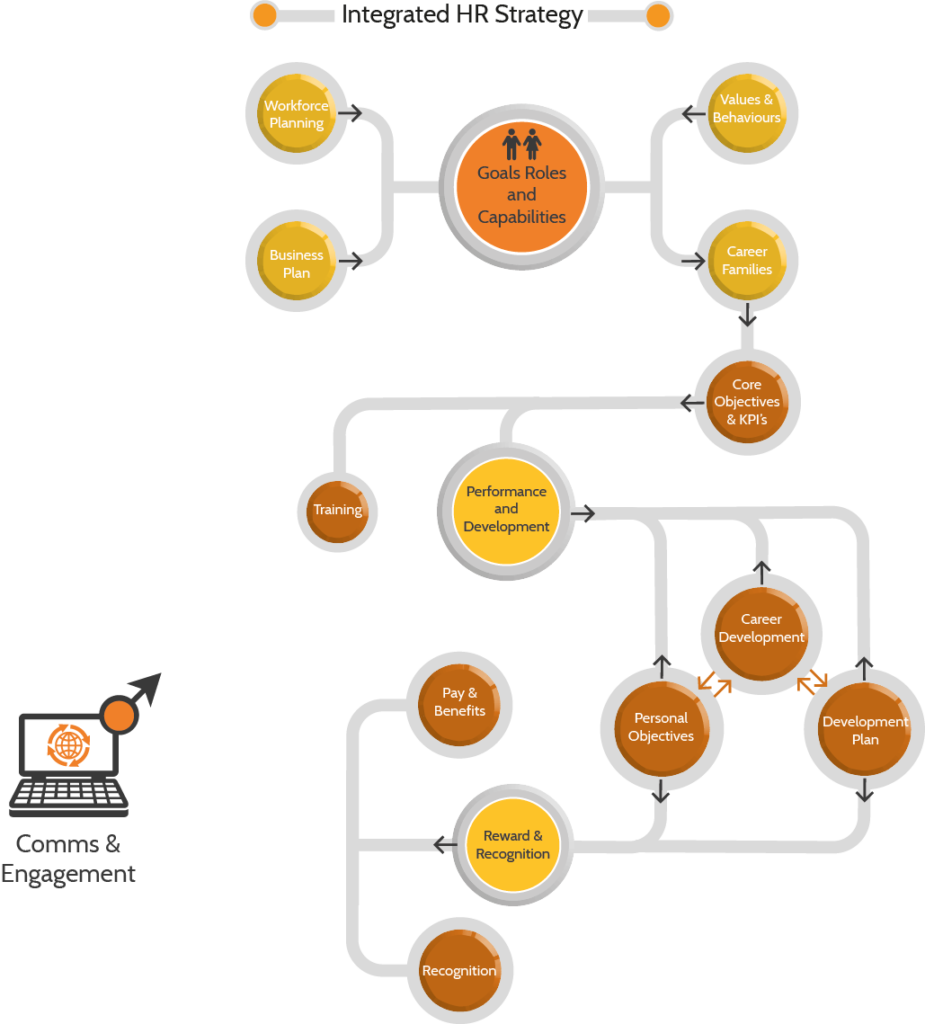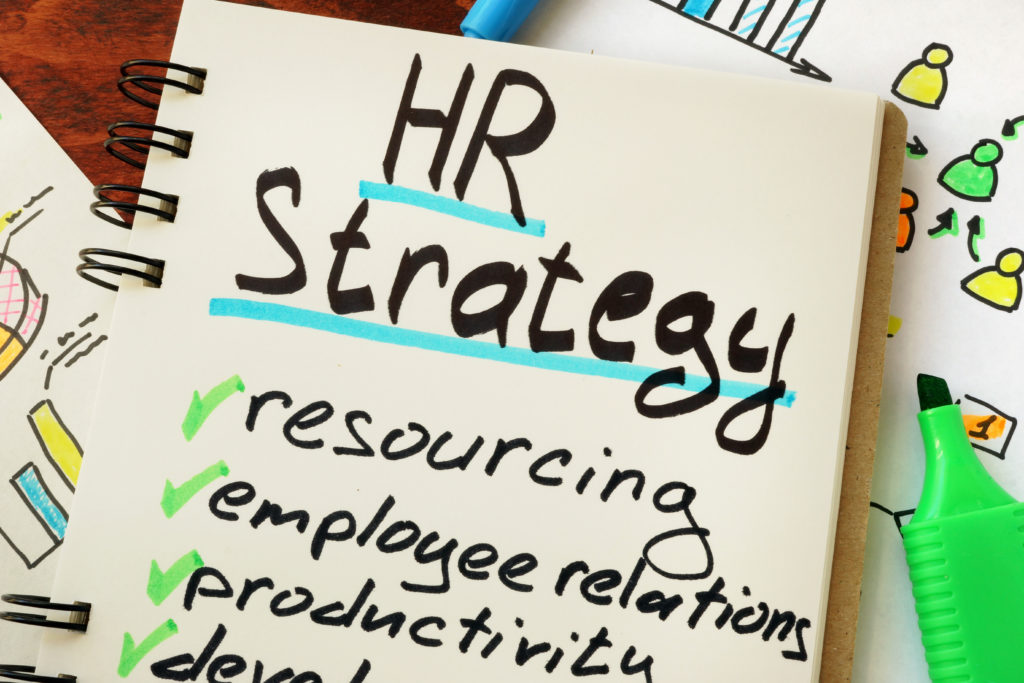Why do I need a HR Strategy?
Whether you are a small business owner or an ambitious employee, the dream is what gets you up, keeps you motivated and keeps you going when frustration sets in.
Unlike DelBoy in Only Fools and Horses who took each day as it came, turning the dream into reality needs a pathway.
Not always an instantly definable and detailed one. Sometimes just the knowledge that it is there is enough to keep trying to define it.
But knowing that it’s there, even on the days you can’t see it, is the motivator. Finding and defining it is the plan. If it’s done well and clearly, the dream will never die.
“Planning is essential to the success of any business. When a company has a plan to follow, leaders are better equipped to prepare for the future. A business plan creates a focus for the company, uniting employees toward common goals. When everyone works together, it’s easier to manage time and resources, to position the company for growth.”
Small Business
In the most basic of headline terms, planning allows the business to set goals, manage time efficiently, allocate resources, prepare for uncertainty and grow existing business.
The strategy digs down into the detail of the plan.
Get HR Strategy support to achieve your long-term or overall business goals
What Does a Successful HR and Business Strategy Involve?
Every business has three bases of resource:
- Equipment/technology
- Finances
- People
Whatever the product or service, nothing can happen without having sufficient funds to get it going and having the equipment and technology to keep it going.
For some time, it might be a one-man band, perhaps with the help of voluntary and willing family members who pitch in.
But eventually the ‘people’ element will outstrip the capacity and time that the entrepreneur has available to do everything themself.
Aligning HR Strategy with Business Strategy
That’s when the time has come to start employing staff and as HR professionals.
We believe that this is an equally important resource alongside the equipment/technology and the finance. Whilst these are critically important, they need people to organise and manage them. This is where HR business strategy comes into play.
The Business Plan will, or should, include its vision and mission. These are described by the:
- High level objectives and goals of the business
- Consideration of its ethics and values as incorporated in its culture
- A knowledge of how many people may be needed in what area of expertise to allow the business to grow successfully.
The successful strategy recognises that each of these elements have their own unique requirements. It also enables them to work symbiotically in order to succeed.
HR Strategic Plan
How far ahead should a strategic plan look? One year? Three years? Five years? Probably all three.
The one year may be based on survival, the three-year plan on expansion and the five-year plan, probably just the high level BHAGs (big hairy audacious goals) for future growth.
The purpose of HR planning is to look into that future with the business.
This is to decide what skills, knowledge and experience will be needed to meet the business goals. It is to accordingly plan the recruiting, retention and training needs of the potential staff.
HR helps the business define the systems it will use. These will ensure that the right people are encouraged to stay with the business. That is because the business cares about them and is the right place for them to succeed and grow as individuals.
HR Strategy and Planning
Which plan should come first? Above we described the relationship as symbiotic and this means that it doesn’t matter which comes first, probably neither. The plan is the blueprint for running the business and it can’t run without people. Ensuring each arm is developed inter-dependently will ensure that the ‘people’ element is an integral element.
This both supports and represents the business’ goals and ambitions.
Where to Start: The HR Strategy Development Process
We have developed this diagrammatic description of the elements of a HR strategy. This shows how they form the virtuous circle of business support.
This particular strategy is for an established business, but the parts that make it up can be added in as the business becomes ready for further sophistication.
What is clear is that the starting elements are the business planning with reference to values and behaviours that help to clarify the workforce planning. These are the HR strategic pillars that represent the entire process.

Workforce Planning and HR Strategy
The diagram also describes the application to a workforce. But where does that workforce come from?
HR people resourcing strategy can be summed up in six words
- Get ‘em
- Keep ‘em
- Use ‘em
And it has worked for me throughout my career when I have been involved in creating a people strategy.
Each section of this strategy is, of course, multi-layered, as can be seen in the above diagram.
HR Strategy Element #1: Get ‘em
Get the right people for the business. Ensure that they have sufficient skills. But, more importantly, get people whose values and behaviours will fit seamlessly into the culture.
This isn’t as simple as it may sound.
The culture of a business is like a personality. The characteristics were already in place when the business was set up. They may develop as the business grows but the base culture is very hard to change.
In order to get the right people, a business needs to be able to define its culture as simply as possible. And once it knows itself, the HR strategy can work with it in getting the people who are the best fit.
Here’s an example…
A small business we have worked with in the past twelve months – a dozen employees, financial services – took on a young person, whom we’ll call ‘Tom’.
He seemed to be a perfect fit. He was bright, enthusiastic, had experience confirmed by an excellent reference. How he got that reference was never questioned. His keenness to get on in his career was welcomed.
The business owner agreed to pay for Tom’s qualification, with the usual caveat that he would remain with the business for a period of time in return for the investment.
But Tom handed his notice in as soon as he got his qualification. He claimed that the documentation to confirm the pay-back agreement had never been signed. He walked out of the door, claiming he was being bullied; with a list of the company’s client details in his hand.
You may wonder how this could have been avoided, short of strapping Tom to a lie detector machine. If Tom was able to talk a such good talk at the interview, how could anyone know what were his real character and intentions?
The answer is less complicated than you might think.
First of all, there are ‘haloes’ and ‘horns.’ This is about unconsciously ‘liking’ people who are like you and disliking people who aren’t. Being able to detach oneself and be objective is the first step.
The next, and most important thing is competency-based interviewing. This is based on the principle that the best predictor of future behaviour is past behaviour:
- Don’t ask questions where anyone can just make up the answers such as strengths and weakness
- Focus the interview on situations that have occurred in the past. Include how they were viewed and how they were dealt with.
Behavioural Principles
Develop questioning around behaviours by first defining what the behavioural principles are that are integral to the organisation’s values and culture.
1. Driven to Achieve
- Being individually, and as a team member, committed to achieving goals and maintaining the guiding principles
- Taking ownership and getting things done
- Being rigorous and always looking to innovate and improve
- Being always customer focused
2. Flexibility
- Helping other members of the team
- Making things happen
- Making the most of every opportunity
- Creating a sense of community
- Respectfulness
3. Respectfulness
- Treating everyone with respect
- Treating everyone as you would be wanted to be treated
- Good communication
- Adhering to high standards of personal and professional conduct
Competency-Based Interviews
Create a set of interview questions once these are in place. Base these around past situations where interviewees have had to make choices and decisions based on behavioural values.
This will be enlightening as how each individual will behave and perform in the organisation.
What happened to ‘Tom’?
We were able to help the business. Although they got their money back, the business owner was left with a headache and a sore heart.
Fortunately, he was a sufficiently sensible man to see where he had gone wrong and willing to learn how to avoid it in future.

HR Strategy Element #2: Keep ‘em
This element is about employee reward and recognition.
According to AZ Central, “organisations with a positive reputation in the jobs market for taking care of its workforce face fewer barriers to effective recruitment.”
A reward strategy isn’t just about pay.
How the business chooses to place itself with regard to pay in the local and national market will play some part in attracting the right candidates.
But a business that offers not just pay related benefits, but care for health and wellbeing will see less turnover.
It is estimated that the cost of turnover is anything from 30% to 150% of the salary of the role holder.
Inevitably some people will leave for non-business-related reasons but gaining a reputation as a caring employer means that people will stay and is good for the bottom line.
There are businesses whose culture is fast and furious and who are open about how it operates and recruits staff with offers of high reward for quick success. The lack of welfare concern can be made up for by top range salaries, bonuses and other financial inducements.
And if staff joining such an organisation know that this is what they are facing, then they will not be too interested in non-financial issues. If such an organisation is happy with the high turnover that comes with this particular brand of culture, then it will thrive.
But there is growing understanding and appreciation of stress and mental health in the workplace. There should still be a caveat about lack of care in these areas. Why? Issues and incidents can still come back to bite these employers in a place where it hurts.
HR Strategy Element #3: Use ‘em
Staff will need to know what to do to succeed in their job and what additional skills, knowledge and experience they will need to grow.
This is to ensure that all staff recruited can benefit from a successful and growing career. There are certain HR retention strategies that can be put in place to ensure this.
In today’s market there is fierce competition for exceptional and rare skills. This means effective on-boarding, training and development will be an essential inclusion in the budget and strategy for staff retention.
“Organisations are affected by a huge range of external and internal factors that together can change the nature of individual job roles or place new demands on individual skill sets. An HR strategy lined to the organisation strategy is better placed to anticipate any such changes and therefore can put in place a targeted training and development plan to help the organisation more quickly adapt to new circumstances”. AZ Central
As the business gets into its stride and starts to take on board the right people, the need to ensure the above three facets of its people strategy become more sophisticated.
Salary
In terms of the right salary to pay, the business must decide where it will set itself.
This is in relation to the market, which can be determined by taking a look at salary surveys locally and nationally. These surveys can be done on the internet or can be bought in from specialist organisations. These latter can also deliver information on what benefits are the best to offer for the roles and for the organisation. As the staff numbers increase, there may also be the issue of ‘job families.’ This is where roles will need to be compared to see which jobs fit into similar categories. These will fit into a job ‘family’ and define the right levels of salary.
Job roles
A well written role profile is for both the role holder and the organisation. It is to understand how the role fits into the business plan and what is required for the holder to be successful. When the organisation has a good set of profiles, it makes designing a fair and effective review system a relatively easy task.
Delivering the Strategy and Strategic Outcomes
In order to align the HR strategy and business strategy, strategic HR aims could be defined in this example:
- Recognised (internally and externally) as a great place to work.
- An adaptable multi skilled workforce that continually improves business performance through the effective use of staff resources.
- An engaged and high performing organisation where results are recognised and rewarded.
- A workforce that is skilled and resourced to meet the current and future needs of the business.
- A workforce that identifies and is able to adapt to change.
- The wellbeing of the workforce is core to the approach.
- An employee offering that sets the organisation apart from its competitors to ensure they continue to attract key talent.
Against each one of these key strategic objectives a target can be set for each level of the business plan such as 1 year, 3 years, 5 years.
This takes the organisation from the ‘now’ to the desired state over a period of time. This also determines how the strategic HR plan is designed in terms of budget/finance, people and how and when these aims can be delivered.
HR Strategic Goals
An important follow-up aspect of the HR strategic plan will be how to assess its impact. The plan must be based on SMART objectives so that it can be appropriate, affordable and sustainable.
When business leaders and HR professionals work together on the people plan, there is a far greater chance of effectiveness than HR having to play catch-up.
The majority of mature businesses have a HR input at a high level. This is proof that recognition of HR works in how best to find and use the right people within the business.
HR for small businesses may seem like a significant and unnecessary investment. But, too often a business goes south due to having to spend too much time with ‘people problems.’
This is when they should start to think about human resource as a strategic partner, if only in the smallest of ways to start with.
And to go back to where this article started, recognition of the importance of an integrated HR strategy will not only maintain the dream, but will push the business towards being the “crème de la Menthe”, as DelBoy Trotter so succinctly put it.
Learn More on HR Strategy for Business Growth
Contact us for HR Strategy support on info@petaurumhr.co.uk
